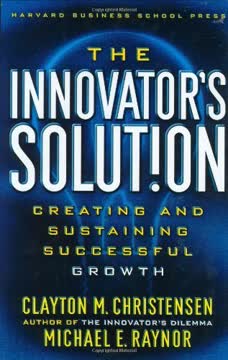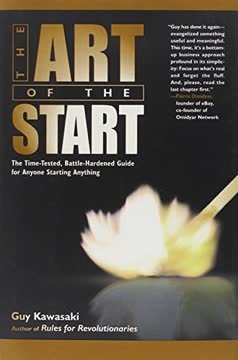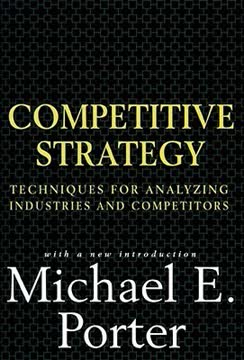가지 주요 요점
1. 무료 경제학: 한계 비용이 제로에 가까워질 때
그 결과, 온라인 세계의 연간 순 디플레이션율은 거의 50%에 달합니다. 이는 오늘날 유튜브가 비디오를 스트리밍하는 데 드는 비용이 1년 후에는 절반으로 줄어든다는 것을 의미합니다.
디지털 혁명은 정보 상품의 생산 및 배포 한계 비용을 극적으로 감소시켰습니다. 이 현상은 세 가지 주요 기술적 트렌드에 의해 주도됩니다:
- 무어의 법칙: 처리 능력이 18개월마다 두 배로 증가
- 급격히 감소하는 저장 비용: 매년 용량이 두 배로 증가
- 증가하는 대역폭: 속도가 9개월마다 두 배로 증가
이러한 트렌드가 결합되어 디지털 상품을 생산하고 배포하는 비용을 점점 더 저렴하게 만듭니다. 그 결과, 많은 디지털 제품과 서비스가 무료로 제공될 수 있으며, 기업은 다른 방법으로 수익을 창출합니다.
무료 디지털 상품의 예:
- 이메일 서비스 (Gmail, Outlook)
- 소셜 미디어 플랫폼 (Facebook, Twitter)
- 비디오 스트리밍 (YouTube)
- 온라인 백과사전 (Wikipedia)
2. 강력한 마케팅 도구 및 비즈니스 모델로서의 무료
스티브 잡스의 주장을 기억하십시오. 파일 거래와 관련된 모든 복잡한 메타데이터를 처리하는 데 시간을 들이면 최저 임금조차 받지 못한다고 했습니다.
프리미엄 모델은 디지털 경제에서 지배적인 전략으로 떠올랐습니다. 이 모델은 기본 버전의 제품이나 서비스를 무료로 제공하면서 프리미엄 기능이나 향상된 기능에 대해 요금을 부과합니다.
프리미엄 모델의 주요 측면:
- 무료 제공으로 대규모 사용자 기반 유치
- 소수의 사용자를 유료 고객으로 전환
- 무료 사용자를 지원하기 위한 낮은 한계 비용에 의존
성공적인 프리미엄 비즈니스의 예:
- 스포티파이 (음악 스트리밍)
- 드롭박스 (클라우드 저장소)
- 링크드인 (전문 네트워킹)
프리미엄 모델은 기업이 대규모 청중에게 도달하고 브랜드 인지도를 구축하면서도 프리미엄 기능에서 추가 가치를 찾는 사용자로부터 수익을 창출할 수 있게 합니다.
3. 무료의 심리학: 소비자에게 매력적인 이유
"제로는 단순한 또 다른 가격이 아닙니다,"라고 그는 씁니다. "제로는 감정적 핫 버튼—비이성적인 흥분의 원천입니다."
무료의 힘은 소비자에게 강력한 감정적 및 심리적 반응을 유발하는 능력에 있습니다. 행동 경제학자 댄 애리얼리의 연구에 따르면, 사람들은 무료 제안을 접했을 때 비이성적으로 행동합니다.
무료의 주요 심리적 효과:
- 비용-편익 분석의 필요성 제거
- 손실이나 후회의 두려움 감소
- 풍요와 관대함의 느낌 창출
이러한 심리적 요인은 종종 소비자가 유료 대안이 더 나은 가치를 제공할 때도 무료 옵션을 선택하게 만듭니다. 기업은 이 현상을 전략적으로 활용하여 고객을 유치하고 관련 제품이나 서비스의 판매를 촉진할 수 있습니다.
4. 디지털 풍요와 그것이 만드는 새로운 희소성
"정보가 풍부한 세계에서는 정보의 풍부함이 다른 것의 희소성을 의미합니다: 정보가 소비하는 것은 바로 그것을 받는 사람들의 주의입니다."
풍요의 역설은 새로운 형태의 희소성을 만듭니다. 디지털 시대에는 정보와 많은 디지털 상품이 풍부해졌지만, 이는 다른 영역에서 희소성을 초래했습니다:
디지털 시대의 새로운 희소성:
- 주의력: 정보 과부하로 인해 사용자 주의를 끌고 유지하는 것이 가치 있게 됨
- 신뢰: 정보가 풍부해짐에 따라 신뢰할 수 있는 출처와 큐레이터의 중요성 증가
- 시간: 선택과 정보의 풍요로 인해 시간이 귀중한 자원이 됨
- 의미: 방대한 데이터에서 통찰을 도출하는 능력이 중요해짐
기업은 이러한 새로운 희소성을 해결함으로써 가치를 창출할 수 있습니다:
- 정보를 필터링하고 큐레이팅하는 도구 개발
- 신뢰할 수 있는 브랜드와 커뮤니티 구축
- 시간 절약 서비스 및 제품 제공
- 원시 데이터에서 분석 및 의미 제공
5. 무료와 경쟁하기: 비즈니스 전략
무료와 경쟁하는 방법은 풍요를 넘어 인접한 희소성을 찾는 것입니다.
차별화 및 부가가치 서비스는 무료 대안이 쉽게 제공되는 세계에서 경쟁하기 위한 주요 전략입니다. 기업은 무료 옵션보다 독특하거나 우수한 것을 제공하는 데 집중해야 합니다.
무료와 경쟁하기 위한 전략:
- 우수한 품질 또는 사용자 경험
- 개인화 및 맞춤화
- 보완 제품 또는 서비스
- 강력한 브랜드 충성도 구축
- 편리함 또는 시간 절약 기능 제공
무료와 성공적으로 경쟁한 예:
- 수돗물과 경쟁하는 생수
- 무료 웹메일과 경쟁하는 프리미엄 이메일 서비스
- 무료 비디오 플랫폼과 경쟁하는 유료 스트리밍 서비스 (넷플릭스, HBO)
무료 대안이 제공하는 것 이상의 추가 가치를 창출하는 데 집중함으로써, 기업은 제품 및 서비스에 대한 요금을 정당화할 수 있습니다.
6. 기프트 경제와 비금전적 시장
자연은 더 나은 삶을 찾기 위해 생명을 낭비합니다.
디지털 기프트 경제는 전통적인 시장과 함께 번성하여 새로운 형태의 가치 교환을 창출했습니다. 이 경제는 평판, 주의, 커뮤니티에 기여하고자 하는 욕구와 같은 비금전적 동기에 의해 주도됩니다.
디지털 기프트 경제의 주요 측면:
- 오픈 소스 소프트웨어 개발
- 사용자 생성 콘텐츠 (위키, 포럼, 리뷰)
- 크리에이티브 커먼즈 라이선스
이러한 비금전적 시장은 종종 전통적인 경제 활동을 보완하고 강화합니다:
- 혁신과 협업 촉진
- 커뮤니티와 네트워크 구축
- 가치 있는 자원과 지식 기반 창출
기업은 기프트 경제를 활용하여:
- 오픈 소스 프로젝트 지원
- 사용자 생성 콘텐츠 장려
- 지식 공유 및 협업 플랫폼 구축
7. 무료가 혁신과 지적 재산에 미치는 영향
특허에는 이미 무료의 자리가 있습니다—17년 후에 발효됩니다.
무료와 지적 재산권 간의 긴장은 혁신과 지적 재산권을 재편하고 있습니다. 일부는 무료가 인센티브를 줄여 혁신을 저해한다고 주장하는 반면, 다른 사람들은 무료가 창의성과 진보를 촉진할 수 있다고 주장합니다.
무료가 혁신을 촉진하는 이유:
- 빠른 반복과 개선을 장려
- 혁신에 더 넓은 참여 가능
- 지식과 아이디어의 확산 촉진
혁신에서 무료에 반대하는 이유:
- 창작자에 대한 재정적 인센티브 감소
- 연구 개발에 대한 투자 부족 초래 가능
- 전통적인 비즈니스 모델 위협
창작자의 권리를 보호하면서도 혁신과 진보에 유리한 환경을 조성하는 균형을 찾는 것이 과제입니다.
8. 무료의 환경적 및 사회적 비용
우리의 페이지는 비쌀 뿐만 아니라 변경할 수 없습니다. 인쇄가 시작되면 우리의 실수와 판단 오류는 영원히 (또는 재활용될 때까지) 보존됩니다.
무료의 숨겨진 비용은 상당한 환경적 및 사회적 영향을 미칠 수 있습니다. 디지털 무료는 물리적 생산이 없기 때문에 환경 친화적으로 보일 수 있지만, 여전히 부정적인 외부 효과가 있을 수 있습니다.
무료의 잠재적 부정적 영향:
- 데이터 센터와 장치 생산의 환경 비용
- 주의 경제의 사회적 비용 (예: 무료 소셜 미디어 중독)
- 전통 산업의 경제적 혼란
이러한 문제를 해결하려면:
- 가격 모델에 실제 비용 포함
- 더 지속 가능한 기술 개발
- 무료의 이점과 잠재적 단점을 균형 있게 고려
9. 디지털 경제 세계에서 무료의 미래
갑자기 100년 이상 전에 다른 경제학자를 조롱하기 위해 발명된 이론적 경제 모델이 온라인 가격 책정의 법칙이 되었습니다.
무료의 진화는 디지털 경제를 계속 형성할 것입니다. 기술이 발전하고 새로운 비즈니스 모델이 등장함에 따라, 무료의 개념은 더욱 보편적이고 복잡해질 가능성이 큽니다.
무료의 미래 발전 가능성:
- 데이터의 통화로서의 사용 증가
- 프리미엄 모델의 진화
- 무료 제공에 블록체인 및 암호화폐 통합
- 가상 및 증강 현실에서의 새로운 가치 교환 형태
기업과 소비자는 이러한 변화에 적응하여 점점 더 무료화되는 디지털 환경에서 새로운 방식으로 가치를 창출하고 포착해야 할 것입니다.
마지막 업데이트 날짜:
FAQ
What's Free: The Future of a Radical Price by Chris Anderson about?
- Exploration of "Free" Concept: The book examines how the concept of "free" has evolved from a marketing tactic to a core economic model in the digital age.
- Impact on Business Models: It discusses how technological advancements have enabled businesses to offer products and services at little to no cost.
- Cultural and Economic Implications: Anderson explores the societal and psychological effects of free, reshaping consumer behavior and business strategies.
Why should I read Free: The Future of a Radical Price by Chris Anderson?
- Understanding Modern Economics: The book provides insights into new economic models emerging in the digital landscape, crucial for business and technology enthusiasts.
- Real-World Examples: Anderson uses case studies like Google and Craigslist to show how companies leverage free to disrupt traditional markets.
- Future-Proofing Knowledge: Understanding the principles in the book helps readers navigate the rapidly changing economic environment influenced by digital technologies.
What are the key takeaways of Free: The Future of a Radical Price by Chris Anderson?
- Free as a Business Model: "Free" is not just a marketing strategy but a viable business model that can lead to significant market share and customer loyalty.
- Psychology of Free: Consumers perceive free products differently, often associating them with lower quality unless they have always been free.
- Cross-Subsidization: The book explains models where one product is free to drive sales of another, highlighting the importance of understanding these dynamics.
What are the best quotes from Free: The Future of a Radical Price by Chris Anderson and what do they mean?
- "There’s no such thing as a free lunch.": While something may be offered for free, there are often hidden costs or trade-offs involved.
- "Information wants to be free.": Reflects the dual nature of information in the digital age, being abundant and easily shared yet valuable.
- "You can make money giving things away.": Highlights the paradox where businesses thrive by offering free products, relying on alternative revenue streams.
How does Chris Anderson define "free" in Free: The Future of a Radical Price?
- Two Meanings of Free: Anderson distinguishes between "free as in freedom" and "free as in zero cost," emphasizing the latter in digital economics.
- Cultural Context: The perception of free has evolved, with consumers often expecting digital products to be free.
- Psychological Implications: Free affects consumer behavior, leading to increased usage and engagement when products are offered at no cost.
What is "freeconomics" as discussed in Free: The Future of a Radical Price by Chris Anderson?
- Definition of Freeconomics: Refers to economic principles and business models arising from free products and services, especially in the digital realm.
- Market Dynamics: Disrupts traditional pricing models, leading to new revenue generation methods like advertising and premium services.
- Examples of Freeconomics: Companies like Google and Facebook offer free services while monetizing through advertising.
How does Free: The Future of a Radical Price by Chris Anderson illustrate the impact of free on traditional industries?
- Case Studies: Uses examples like the decline of print newspapers due to free online content to show disruption of traditional models.
- Market Redistribution: Free can redistribute wealth within industries, benefiting consumers while challenging established companies.
- Long-Term Effects: While initially harmful to existing businesses, free can create new opportunities and markets benefiting society.
What are the psychological effects of free on consumers according to Free: The Future of a Radical Price by Chris Anderson?
- Perception of Value: Consumers often perceive free products as lower quality, especially if they were previously paid products.
- Increased Engagement: Free offerings lead to higher engagement and usage rates, removing barriers to entry.
- Mental Transaction Costs: Free eliminates cognitive effort required for purchasing decisions, encouraging participation.
How does Chris Anderson explain the concept of cross-subsidization in Free: The Future of a Radical Price?
- Definition of Cross-Subsidization: Occurs when one product is free or low-cost to drive sales of another profitable product.
- Examples in Business: Includes models like the razor-and-blades, where the razor is cheap to encourage blade purchases.
- Strategic Importance: Understanding cross-subsidization is crucial for developing effective business models in the age of free.
What role does technology play in the concept of free according to Free: The Future of a Radical Price by Chris Anderson?
- Driving Down Costs: Advancements in technology have made it possible to offer products and services for free.
- Creating New Markets: Technology enables new markets and business models leveraging free, transforming industries.
- Future Implications: As technology evolves, free will become more integral to business strategies and consumer behavior.
How does Free: The Future of a Radical Price by Chris Anderson address the future of free in the economy?
- Ongoing Evolution: Free will continue to evolve, influencing business operations and consumer interactions.
- Potential Challenges: Risks include monopolies forming around free services, limiting competition and innovation.
- Opportunities for Growth: Embracing free principles can lead to new opportunities for growth and innovation in the economy.
How does Free: The Future of a Radical Price by Chris Anderson address the issue of piracy?
- Piracy as Marketing: Suggests piracy can increase visibility and audience reach for creators.
- Changing Attitudes: Attitudes toward piracy are evolving, especially among younger generations.
- Long-Term Strategies: Creators should leverage free distribution benefits while finding monetization methods.
리뷰
Free: The Future of a Radical Price는 디지털 시대에서 "무료"라는 개념을 탐구하며, 제품이나 서비스를 무료로 제공하는 것을 중심으로 한 다양한 비즈니스 모델과 전략을 논의한다. 일부 독자들은 이 책이 통찰력 있고 생각을 자극한다고 느꼈지만, 다른 이들은 반복적이고 지나치게 낙관적이라고 생각했다. 이 책은 무료 제공의 역사적 사례와 그것이 비즈니스에 미친 영향, 그리고 무료 제품에 대한 소비자의 반응 심리 등을 검토한다. 혼합된 평가에도 불구하고, 많은 독자들은 디지털 시대의 변화하는 경제 환경에 대한 앤더슨의 분석을 높이 평가했다.
Similar Books















